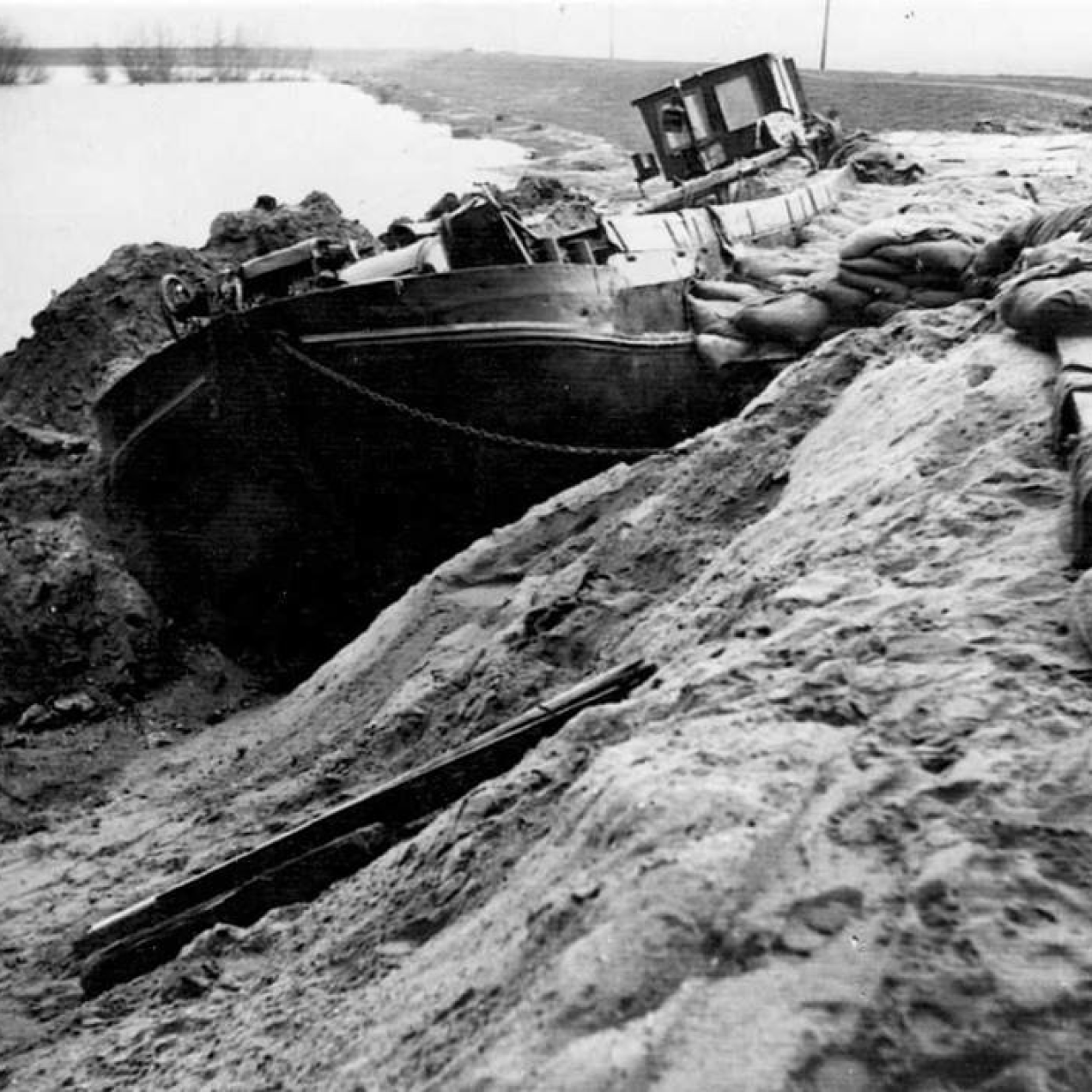
Did you know that the disaster in 1953 could have been even worse? The dikes breached at Nieuwerkerk aan de IJssel and Ouderkerk aan den IJssel, causing almost the entire area between Rotterdam, The Hague, Gouda, and Leiden to flood.

The people living here stayed safe thanks to Arie Evegroen. He closed a gap in a crucial dyke with his ship.
"I know how close all of Holland came to total disaster. It wasn't just a camel, but a whole herd of elephants that went through the eye of the needle"

A close call
Here you can see how close the water came to flooding. An area with about 3 million residents was nearly submerged. The Hollandsche IJsselkering was built to prevent this from happening in the future.
Why was a barrier chosen here instead of a dam?

The design in brief: The Hollandsche IJsselkering consists of a lock, two bridges, and two sluice gates. These sluice gates close off the river during high water. Even then, many ships can still pass through the lock.

In 1958, the Hollandsche IJsselkering was completed, but it had only one sluice gate at that time. There wasn't enough money for the second sluice gate, which was installed 18 years later.
That stands out
At times of dangerously high water, the sluice gates of the flood barrier close. To prevent ships from colliding with the gates, the towers are painted red. This signals to ships that they should stay away.
The barrier in numbers:
- 40 million guilders in construction costs
- 2 sluice gates, each 82 meters wide and 11.5 meters high
- Each sluice gate weighs 480,000 kilograms
- 4 towers, each 45 meters high
- 4 years of construction
